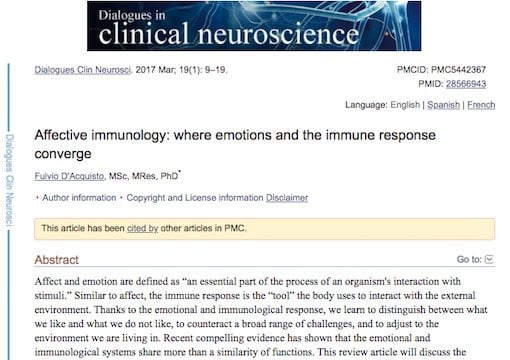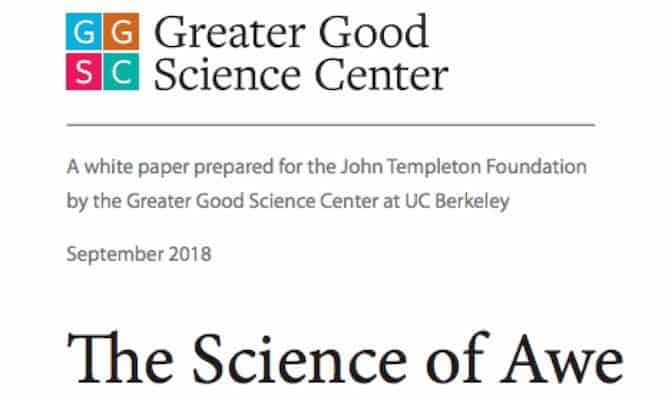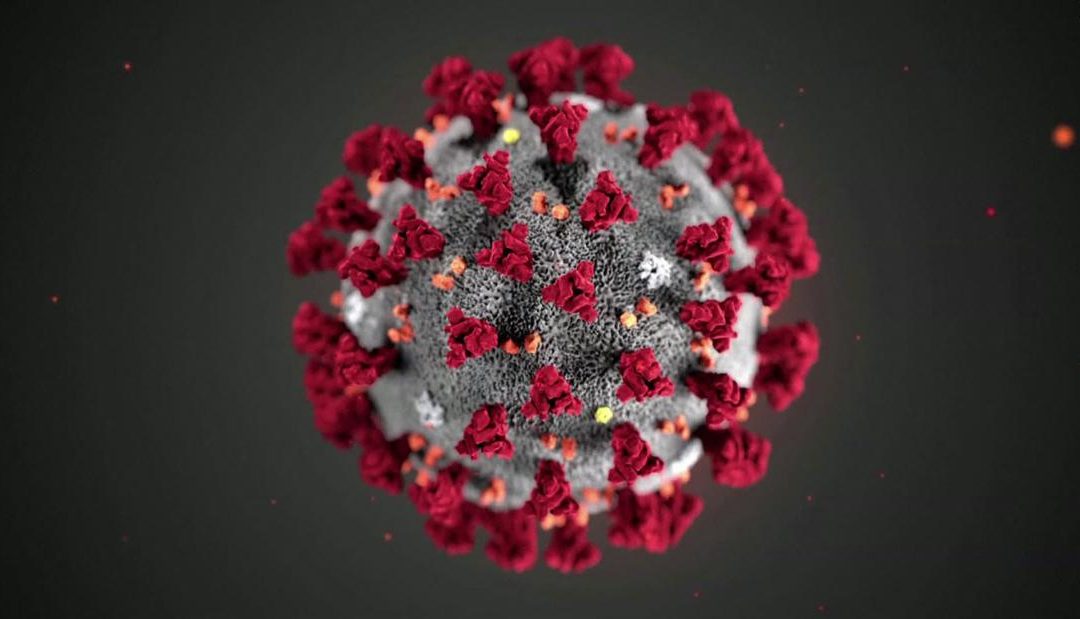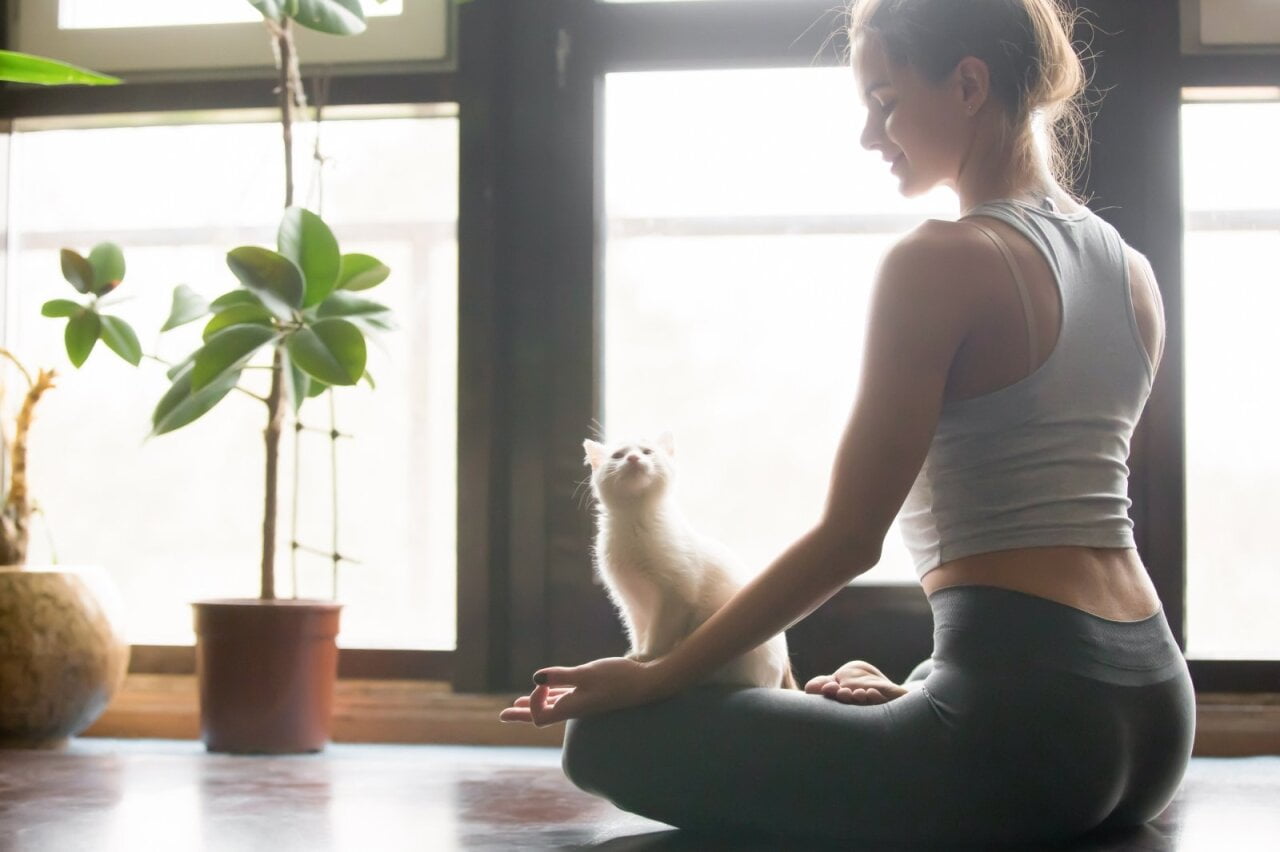
Reducing Uncertainty During Epidemics
We all worry about the future nowadays. Things, like “will we stay healthy despite COVID-19 and what may happen to our businesses”.
We may consider worry a “negative” emotion, but it is also an important evolutionary adaptation which we are all hard-wired to have. Anxiety, worry, fear, etc. can all activate the sympathetic nervous system and fight-or-flight responses we use to survive.
However, these emotions can also weaken the immune system and make us less resistant to infections like COVID (1).

“Positive” feelings like happiness, love, gratitude and awe can improve the immune surveillance that let’s the immune system detect and destroy the virus.
This may not keep you from getting sick, but feeling positive emotions like “awe”, from observing natural phenomena, are research-proven to improve things like infections, quality of life and even cancer (2).
 A few strategies to decrease this worry include:
A few strategies to decrease this worry include:
- sticking to well-defined schedules – i.e. virtual yoga every day at 12
- practicing temporal distancing – think about a time when life is more normal
- connecting socially – while physically distancing
- appreciating nature – watch the sunset, some birds flying, etc.
Think about how fortunate our earth is that we are giving her this unprecedented rest. Our atmosphere is rejuvenating to help the wonders of nature live on for many years.
Experiencing positive emotions are just one way to support our bodies to help them resist the virus. These supportive actions are one of the Avoid, Support and Cure (ASC) methods that can be used to keep us well.
It is especially helpful nowadays, as we slowly expose ourselves to others, to know that we can use all 3 together to survive and thrive. By ASCing what we can do, we can formulate a specific action plan. Supportive and Curative Holistic Actions! may even improve your immune system’s ability to detect and destroy the virus. Optimizing this natural process of immune surveillance reduces risk of infection and cancer (3).

The CDC and WHO have given us important strategies to Avoid the virus, as we should, to use the first of the 3 categories. Here are all 3 of the harmless and helpful Holistic Actions! that we can use:
1. AVOID – actions to prevent viral exposure
- physical distance
- wash your hands
- stop touching our faces
2. SUPPORT – actions that promote healing and immune surveillance
- eating vital (fresh) foods like wild blueberries and kale
- breathing deeply through our noses
- feeling positive emotions and connecting
3. CURE – actions that work to eliminate a hypothesized underlying energetic imbalance
- Traditional Chinese Medicine (like acupuncture)
- ayurveda
- homeopathy

#3 can be especially reassuring even though it uses a different medical paradigm than we practice. Numbers do not lie, and with epidemics they are compelling.
For example, it is reassuring to look at historical data about past epidemics and pandemics. >30% more NY City residents (vs. Philadelphia and Boston) could stay healthy during the 1918 Spanish Flu in New York City thanks to the health commissioner who was a homeopath (4).
In fact, homeopathy saved so many lives during this and past epidemics like flu, cholera, typhoid, etc. that the only monument to a foreign doctor in Washington DC honors Dr.
Hahnemann who first described homeopathy.
While you’re Avoiding the virus, perhaps watch the Empower Hour! Webinar below to learn more about support the body and activating natural healing mechanisms using homeopathy. This is especially important nowadays when anti-inflammatories, which interfere with natural healing mechanisms, can worsen COVID outcomes.
- 00:00 Introducing today’s topic and guest
- 03:00 Genus epidemicus for fear
- 07:00 Switching the views – power of nature
- 10:00 Explaining genus epidemicus and homeopathic doctors’ experience
- 14:00 Fear = susceptibility
- 21:00 Conquering fear – focusing on love based medicine.
- 23:30 Homeopathy preventing a pandemic / Spanish flu
- 31:30 Laughing medicine
- 33:30 Q&A: wearing masks
- 41:00 Social distancing vs. physical distancing / some humor
- 44:00 Shift network to decrease fear
- 46:00 Laughing / Patch Adams
- 47:10 Homeopathic remedies and how to distinguish between them
- 49:00 Spiritual side of Corona
- 51:45 Gradual exposure protocol / Parvo / nosodes / weekly interval
- 56:30 Corona in cats
References
- D’Acquisto F. Affective immunology: where emotions and the immune response converge. Dialogues Clin Neurosci. 2017;19(1):9–19.
- https://ggsc.berkeley.edu/images/uploads/GGSC-JTF_White_Paper-Awe_FINAL.pdf?_ga=2.264775759.1940632547.1560215051-317587101.1560215051
- Swann JB, Smyth MJ. Immune surveillance of tumors. J Clin Invest. 2007;117(5):1137–1146. doi:10.1172/JCI31405
- Aimone F. The 1918 influenza epidemic in New York City: a review of the public health response. Public Health Rep. 2010;125 Suppl 3(Suppl 3):71–79. doi:10.1177/00333549101250S310
4/13/2020 Empower Hour! Q&A Covid
04/06/2020 Empower Hour! Epidemics & Decreasing Fear

Give Reiki A Chance?
 How would you like to be able to help restore balance in your pets’ bodies in a free and 100% safe way?
How would you like to be able to help restore balance in your pets’ bodies in a free and 100% safe way?
That’s what Reiki can do. It is a form of medicine that uses your own healing energy and intention guided by the unknown spirit of nature that is all around us.
Think of it this way – Reiki harnesses that feeling inside you when you are thinking of hope, or when you remember sweet moments with your beloved (human or animal).
The intention of Reiki is to hold yourself and others in that compassionate light, not needing to fix anything, just trusting that all is well and we are whole, perfect and complete in this very moment.
Reiki is being used in both human and vet hospitals to reduce pain and improve quality of life for patients.
You can read this peer-reviewed study of Reiki.
Some may think that using Reiki requires special training. While Reiki classes are available in person and online around the world. It can also be done right just by meditating with your animals. Once you allow yourself to feel the light within, every being around can respond to it.
Watch/listen to 5min guided Reiki Meditation
One important concept that Reiki can teach us is to focus on quality of life and not any specific symptom. Reiki healing can help any living being have the best life possible. Health is freedom and to heal means to regain it and reduce suffering.
Reiki can be used for every living being in your house (including plants). And you can offer it to everyone at the same time, no need to focus on one being.
Animal Reiki
Animals may be more sensitive to Reiki than people so they may not want your hands on them. When you practice animal Reiki let the animals take the lead and guide you to what they want. Some may come and curl up in your lap and seem to request a hands on approach while other walk away.
Animal Reiki starts with intention, is based on animal’s choice, and uses your focus and presence. It’s not about whether the animal is cured, but if they find peace in the process. Reiki is healing of the spirit – it may not lift the dis-ease, but will lift suffering.
When you are doing Reiki for your animals you will benefit as well, with stress relief, deep relaxation, feeling of peace and wellbeing. When you feel better your animals also feel better which promotes healing.
Animal Reiki helps us remember that all is well. One of the best things you can offer is your presence and animals can feel that.
It does not cost anything and may help, so give Reiki a try.
Watch our webinar with animal reiki master Kathleen Prasad
03/30/2020 Empower Hour! Covid

Got a Case of the COVID Blues? Six Easy, Fun, and Meaningful Ways to Feel Better and Enhance Your Mental and Physical Health
Note: While it may seem unusual for a veterinarian to be talking about human health, an increasing body of research is showing that pets, people and the planet are all interconnected. While I’m not trained as a human doctor and generally limit my content to petcare, the same principles of balance and vitality that apply to animals also apply to those who care for them.
Making well-informed medical decisions is always of utmost importance, and in a time where COVID-19 can make many of us feel more concerned about our health than ever, we’re here to help! Here are six easy (and often fun) things you can do to help you feel that much more confident about finding balance, enhancing health and happiness, and boosting your immunity!
- Go on a “sniff walk” in the fresh air with your pet and breathe deeply through your nose. Aim for at least 30 minutes of this enjoyable, restorative, and fortifying activity. Besides beholding the wonders of nature and breathing fresh air, being outside gives you a chance to more fully absorb and store solar energy. (The thinking is that both humans and pets can later convert this light into energy that the body can use.
Playing fetch in the park or backyard with your dog, basking in the sunlight on your back porch or patio with your cat, or simply standing with your face to the sun are all wonderful ways to receive the sun’s uplifting energy. Stretch out your arms and drink in the light. Appreciate the warm rays on your skin, the twittering of birds, and the miraculous aliveness of nature. Simply by assuming this open, receptive posture, you make it that much easier for your body to do what it was designed to do: find balance and wellbeing.

- Make meals that include darkly colored fresh vegetables and fruit, such as wild blueberries and kale. (And while you’re at it, remember to notice what a blessing it is to be able to access such a wide variety of fruit and vegetables year-round.)
Eat as much fresh food as possible (this is part of optimal pet nutrition as well). Include green leafy vegetables, fruits (wild blueberries, kale, sprouts, and so forth) in your diet (click here for my favorite smoothie). In addition to supplements and vitamins (vitamin C, D, E, zinc and among the most commonly recommended), you may want to boost your immune system with community mushroom extract. (You can use this product for your pet) Also, it has been shown that licorice root is particularly powerful in reducing viral replication. You can get an extract or add it to your tea (be cautious of taking large doses if you have high blood pressure).
- Stop, center, and take at least 50 HA! breaths (just say “HA!” loudly) daily.These forceful expulsions of air help maintain good lung function and aid in early detection of respiratory problems. Laughter, intentional coughing, and Kapalabhati breathing (from yoga) are three other easy ways to do this.Pranayama, or breathing exercises, increases your body’s ability to heal by supplying it with more oxygen and what some ancient systems have viewed as prana (life force energy). It also exercises, strengthens, and helps to protect your lungs (the very organs that are most susceptible to COVID-19).
You can use many different techniques, but just taking deep breaths and allowing your lungs to fully expand is of itself a wonderful way to care for yourself. Take 10 deep breaths a few times a day. If you can do it outside or in nature, you also get the extra benefit of breathing positive ions that increase your ability to heal. You can also help your pets with pranayama. For your dogs, provide them with a snuffle mat. For cats, help them purr. For both, hide their favorite treats around the house that they’ll have to sniff out to find!
- Look for opportunities to nourish yourself with the experience of gratitude, wonder, or awe. One of the easiest ways to do this is to see if you can notice something to appreciate in your environment that strikes you as beautiful, interesting, or somehow meaningful. This could be something as simple as the way the sunlight shines through a tree, a colorful assortment of vegetables at the farmer’s market, the comforting feeling or your favorite sweater, or the sound of a dear friend’s voice.
As Kelly McGonigal says (more on her and her work in the next step!):
I believe that it is possible to experience hope, joy, and meaning, even when things are difficult. And I believe that the best way to do this is to connect—with one another, and with something bigger than ourselves.
Throughout human history, across all cultures, this “something bigger than ourselves” that connects us to ourselves and each other has gone by many names: God, Source, Life, The Universe, Truth, Love, Awareness, Consciousness, Buddha Nature, the Tao, Allah, the Great Spirit, Gaia, and so forth. Whatever you may call it, it can be thought of as the deepest intuition that lies within every human heart and makes life most meaningful.
We each have different ways of connecting to this intuition. For some of us, it is through going to church each Sunday. For some of us, it is practicing yoga. For some of us, it is devoting our life to our pets or those who need our care. For some of us, it is through gardening or creating art, music, or poetry. For some of us, it is working for social justice. For some of us, it is by creating homes where family, friends, and guests can feel safe, welcome, seen, and celebrated for who they truly are.

There are endless ways to connect with and express our intuition of belonging to something bigger than ourselves. Whatever your way may be, remember to return again and again to it. And if you haven’t yet found your own special way of doing this, that’s completely okay. Simply searching for it is its own kind of beauty and reward, especially if you can find people to connect with who are also interested in searching with you.
- If you feel sad, anxious, depressed, or lonely, give yourself permission to feel this way and give yourself the empathy that all painful feelings deserve. The pandemic has brought very real challenges for many of us. You don’t need to feel bad or guilty about feeling bad or being “negative.” (If you find yourself in a “negative” mood, see if you can be a good friend to yourself by doing your best to listen without judgment for what this mood might be trying to tell you, and what kind of care it might be needing.) When you can befriend your “negative” emotions in this way, they turn out not to be so negative after all, but just understandable responses to difficult circumstances that are seeking safe connection and compassionate presence.
You can actually learn a lot about this by noticing the ways you naturally show care to your pet. If your pet shows signs of anxiety and stress, you don’t think things like, “What is wrong with you! Pull yourself together and stop feeling sorry for yourself! You’re totally overreacting! You have no reason for feeling this way! Why can’t you be more positive?” Instead, you naturally ask yourself, “I wonder what is making my pet anxious and stressed? I wonder what he or she needs to feel safe? I wonder what it is in their environment that maybe needs changing to help them feel more comfortable and at ease? I wonder what I can do right now to reassure my pet that everything is going to be okay?” When you find yourself with difficult feelings, do your best to show yourself the same kind of care and compassion as you show your pet.
Speaking of stress, for many years it was believed that stress caused negative emotions and had an inherently damaging impact on health. We are now learning that this is not the case! This is wonderful news, because it means that stress is not our enemy. Researcher Kelly McGonigal is showing us how practically everything we’ve been taught to believe about stress is wrong, and how it can actually play an incredibly important and hopeful role in our lives. To learn more about why stress doesn’t need to pose a danger to your mental or physical health and how to befriend it, watch this inspiring and encouraging 5-minute video excerpt from Kelly’s groundbreaking TED talk.
- Refresh your holistic emergency kit. Many of the remedies included in this kind of kit can be used to improve your body’s balance and to promote healing. Read this post from the HA! forum for more information on how holistic approaches have been successfully used in the past to prevent and control epidemics.
In closing, the HA! team sends our prayers and best wishes to everyone throughout the world that has been affected by this historic pandemic. Our hope is for better balance in the world and greater empowerment for all as soon as possible. If you’ve found this article to be helpful, please share it with your friends. As always, we invite and welcome any feedback you may have for us and can be reached by emailing [email protected].
Stay safe, Vital and healthy,
Drs. Jeff, Christina, and Sara along with Gail, Jen, and Amy
The Holistic Actions! faculty prays for better balance and greater empowerment, as soon as possible, for everyone in our new world. Please share this article with your friends and your experiences with us (email [email protected]).
This article is part of the series of Vitality and Balance related articles. If you enjoyed it, consider reading these posts: “Fatal Viruses And One Health”, “Internal Balance & Covid” , “Do Pets Get Covid?” and “One Way to Re-Connect Nature and Veterinary Medicine”.
